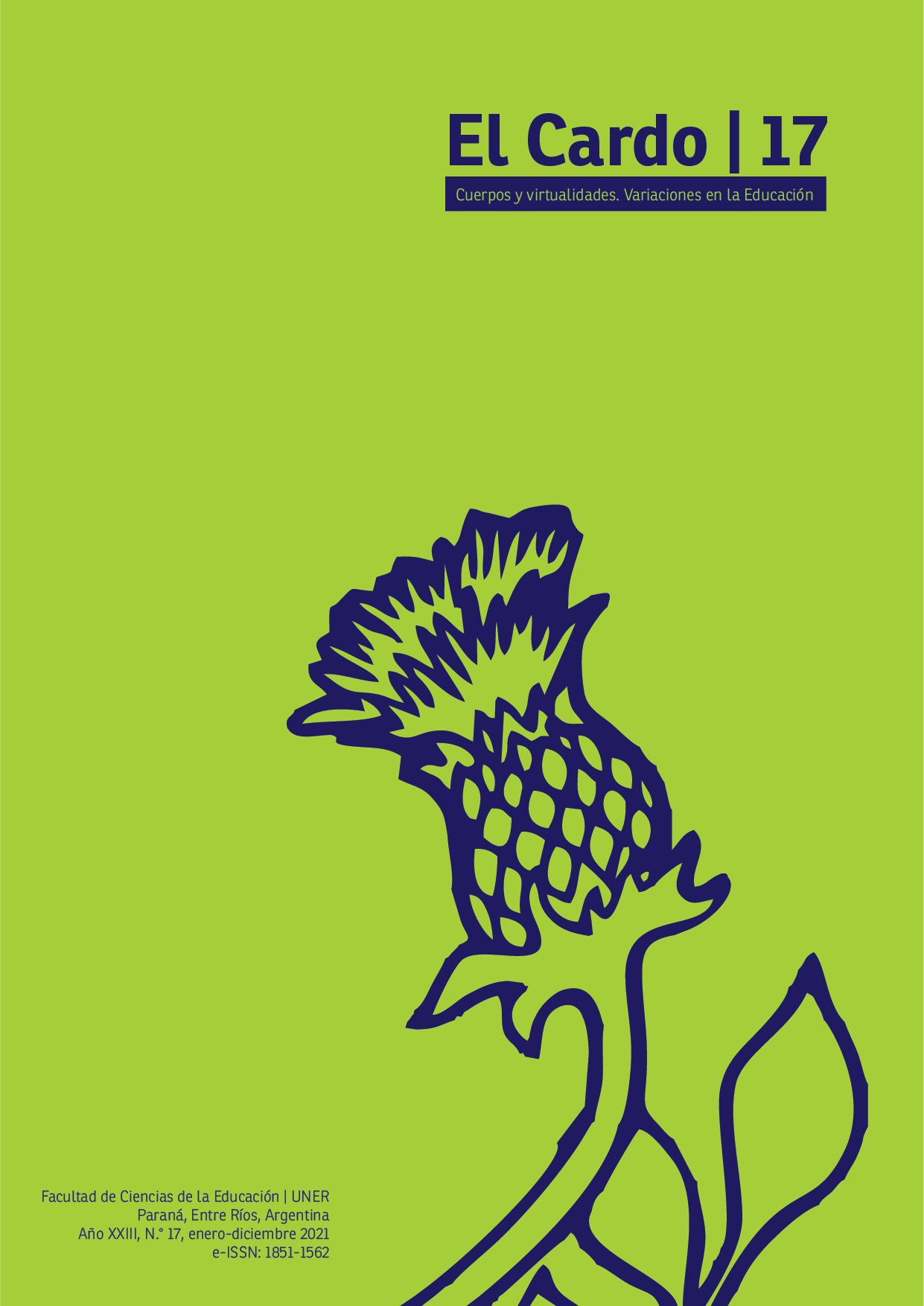Preliminary results obtained from the experience of dictation in virtual format of the subject "Body Expression Workshop" in the context of the Covid-19 Pandemic.
Main Article Content
Abstract
This article is part of the research approved by the General Secretariat of Science and Technology of the National University of the Northeast (UNNE) -PI: N18002-, entitled “Corporeity and Creativity in the subjectivation processes of university students of the Bachelor's Degree in Combined Arts and the Degree and Teaching Staff in Initial Education ”. It proposes the survey, analysis and interpretation of information provided by students who take subjects that involve them experientially in and with their corporeities. One is the "Body Expression Workshop", of the Faculty of Humanities, and the others are "Body Language II: Theater" and "Seminariom Combined Arts Workshop II: Scenic Space", of the Faculty of Arts, Design and Sciences of Culture (FADyCC).
The information obtained from students who took the "Body Expression Workshop" during the 2020 school year will be analyzed, linking it with a theoretical framework of reference that defines what is understood by body, body diagram and image and body map. The proposal is to reflect on what it meant for teachers and could mean for students, the virtual experience of this artistic discipline, and the impact or not that it would have had on the perceptions of their corporeities. The information has been obtained from a practical work carried out in several stages in groups of up to three members, which proposed the approach of group work segments linked to the definition of constitutive aspects of the human condition that make up the field of knowledge of Expression Corporal-Dance: Corporeity, Communication, Creativity, Spatiality and Temporality, on the one hand; and on the other, an individual work that involved them in the elucidation of the body image in connection with the body scheme as constituents of the body map. In this case, the Corporeity axis will be addressed.
Downloads
Metrics
Article Details

This work is licensed under a Creative Commons Attribution-NonCommercial-ShareAlike 4.0 International License.
References
ESPINAL GAEDA, A. [En línea] (2006). La sociología del cuerpo. Portal psicopedagogía.com. [consulta: 4 de marzo 2018]. Recuperado de: http://www.psicopedagogia.com/sociologia-cuerpo
GARCÍA DELGADO, D. y NOSETTO, L. [En línea] (2005). Por una Ciudadanía Plena más allá de la sociedad excluyente. (consulta: 5 de octubre 2018) Recuperado de: https://docplayer.es/33050277-Por-una-ciudadania-plena-mas-alla-de-la-sociedad-excluyente.html
GUIDO, R. (2009). Cuerpo, Arte y Percepción. Aportes para repensar la sensopercepción como técnica de base de la expresión corporal. Buenos Aires, Argentina: IUNA.
HURTADO HERRERA, D. R. (jan. /abr. de 2008). Corporeidad y motricidad. Una forma de mirar los saberes del cuerpo. Revista Educação & Sociedade, 29 (102), 119 - 136.
KALMAR, D (2005). ¿Qué es la Expresión Corporal? Argentina: Edit. Lumen
KEMELMAJER, J. (2001). Movimiento Expresivo y Creatividad. Mendoza: Facultad de Educación Elemental y Especial, Universidad Nacional de Cuyo.
LE BRETON, D. (2008). La Sociología del Cuerpo. Buenos Aires, Argentina: Nueva Visión.
MATOSO, E. (2011). El Cuerpo, Territorio de la Imagen. Buenos Aires, Argentina: Letra Viva.
MERLAU-PONTY, M. (1994). Fenomenología de la Percepción. Barcelona, España: Planeta-De Agostini.
SCHILDER, P. (1983). Imagen y apariencia del cuerpo humano. Estudios sobre las energías constructivas de la psique. Barcelona, España: Paidós.
SCHINCA, M. (2000). Expresión Corporal. Técnica y expresión del movimiento. Barcelona, España: Praxis S. A.
Video
BOGGIAN, A.; GIORGIO, F. y DÍAZ, M. [En línea] (2020). Encuentro con Elina Matoso. Instituto Superior Provincial de Danzas Isabel Taboga, Rosario [consulta: mayo 2020]. Disponible en: https://www.youtube.com/watch?v=Uq_9W2WjooA





